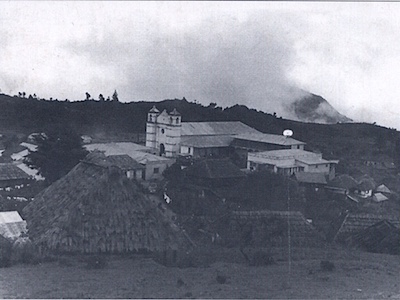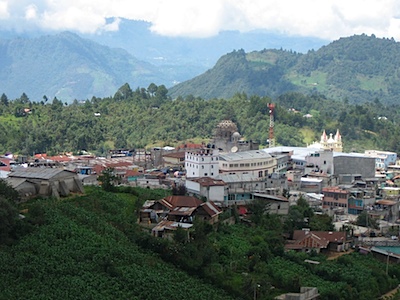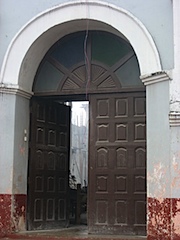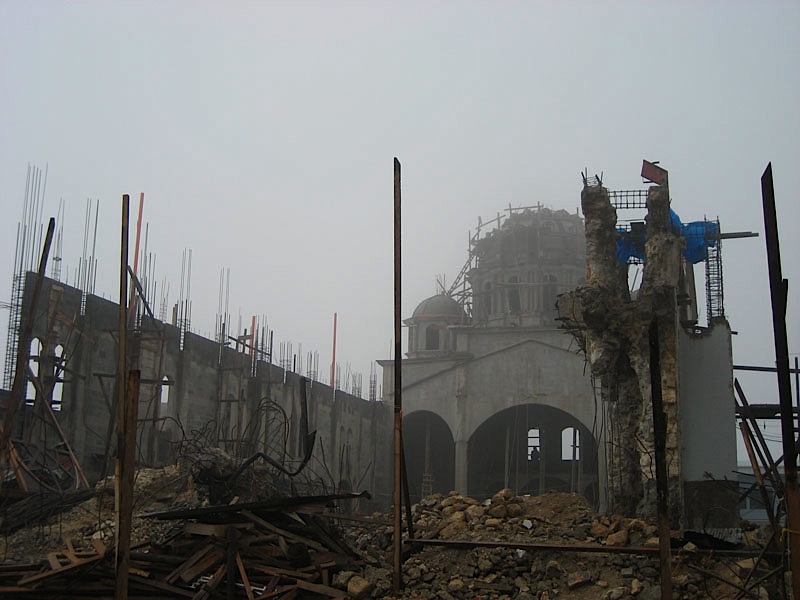I found a great book during our COS conference. I’d been looking for it for over a year, ever since I heard about it from Karen, our linguist friend from the University of Illinois. Way back in 1932, an American enthnographer named Oliver LaFarge made a trip to Santa Eulalia, and studied the Q’anjob’al Mayans for about six months. The book he later published, Santa Eulalia: The Religion of a Cuchumatan Indian Town, is out of print and pretty scarce. But by some miracle, a touristy bookshop in Antigua had a translation in Spanish. Mastercard took care of the rest.
After getting over the initial shock that I am able to actually read a “grownup” book in Spanish now, I realized that this book is a treasure trove of great cultural information about the people we live and work with. It’s a shame that I didin’t find it a year ago, when I’d been in site long enough to frame the information in its proper context, but still had enough time left to pursue its inquiry further. As it is, every few pages I find a gem that really gets me. For example, just last week we were riding with a microbus driver and got to talking about place names. A nearby village is called Yich Joyom. We already knew that Yich means “place of,” but the driver informed us that Joyom is slang for the hat worn by people from Todos Santos, and by association, can also mean anyone from there. Apparently, way back when, a Todosantero passed through the area and his hat fell off, so people started calling the place Yich Joyom.
In the book, LaFarge talks about ethnic relations between the Q’anjob’al and various neighboring tribes, and lists off a bunch of slang words the locals use to describe their neighbors. Joyom is one of them. He goes on to say that these words are ethnic slurs (much like the word “nigger”) and will often start a fistfight when used within earshot of the neighbors in question. That’s good to know, and our microbus driver failed to mention that important subtlety.
LaFarge also names several of the most helpful villagers he worked with, and all the names that look familiar: Lwin Ximon, Matin Palas, Pedro Mateo, Antonio Juárez, etc. They love to recycle names here. Although most of his acquaintances were old men, he worked with a 15-year old named Vírvez Diego. Could he yet live? He’d be, what, 93? It’s possible, and even more likely that people who knew him are still around. But I have no idea how I’d ever find them.
His interactions with the locals are also eerily famliar. “As friends,” he says, “they are loyal, considerate, reliable, generous, and tend to be dependant. As enemies, they are tranquil, secretive, meek, and untiringly patient.” Yep. He goes on to say that the Q’anjob’al are laconic, and the best stories can only be had from close friends after sitting around the fire in the late evening.
The large part of LaFarge’s study, though, is religious life and customs. The cover of the book is a black and white photo of Santa Eulalia from the nearby mountainside, showing the church surrounded by a few straw-roofed houses as they were in 1932. It stopped me in my tracks when I saw it; I know that church well, but how the town has changed! I climbed the hill above town a few weeks ago to take the same picture LaFarge took, 78 years later. LaFarge claims that the main town itself had an urban population of about 85 people. I believe it, based on the photo, but now the town center has about 10,000 people, and about 30,000 more can be found in the surrounding villages of the municipality.
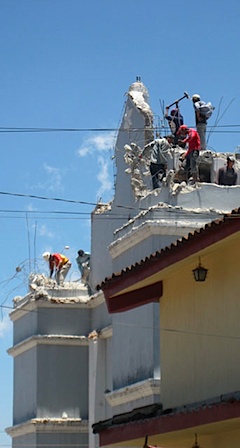 And the church? Well, it was the same until shortly after we got to our site. The local congregation decided that since they could no longer fit everyone inside, they needed to knock the historic church down and build a new one. After a lot of serious debate and many angry dissenters, demolition began. They’ve been tearing it down piecemeal for over a year, building it back fancier and bigger as they go.
And the church? Well, it was the same until shortly after we got to our site. The local congregation decided that since they could no longer fit everyone inside, they needed to knock the historic church down and build a new one. After a lot of serious debate and many angry dissenters, demolition began. They’ve been tearing it down piecemeal for over a year, building it back fancier and bigger as they go.
Just last month, I witnessed the final destruction of the two towers flanking the entryway. No heavy equipment or explosives here; they do demolition the old fashioned way: muscle and sledgehammer.
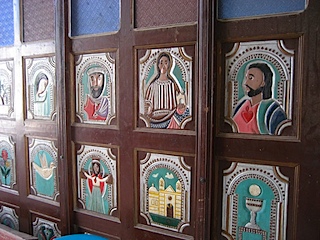 What’s there of the new church so far looks quite nice, but I am a romantic, interested in both history and architecture. I side with the crowd that wanted to keep the church, or at least, retain its historic façade and towers. I don’t even think they kept the cool old woodwork, like the main doors or the elaborate wooden screen that was in the entryway. Last weekend we were talking with our friend Antonio, and he told us an interesting tale about the church that he heard from his grandfather, who heard it from his. Some time in the late 1800s, the villagers were sleeping one night when they awoke to a noise like an earthquake. They went outside to the field where the church now stands, and saw that the lowest level of the church had sprung from the earth. They were amazed (and probably terrified), and over the course of the next few nights, this continued until the church towers you see in the black and white picture were fully built.
What’s there of the new church so far looks quite nice, but I am a romantic, interested in both history and architecture. I side with the crowd that wanted to keep the church, or at least, retain its historic façade and towers. I don’t even think they kept the cool old woodwork, like the main doors or the elaborate wooden screen that was in the entryway. Last weekend we were talking with our friend Antonio, and he told us an interesting tale about the church that he heard from his grandfather, who heard it from his. Some time in the late 1800s, the villagers were sleeping one night when they awoke to a noise like an earthquake. They went outside to the field where the church now stands, and saw that the lowest level of the church had sprung from the earth. They were amazed (and probably terrified), and over the course of the next few nights, this continued until the church towers you see in the black and white picture were fully built.
Make of it what you will.
This all gets back to something I’ve marveled at many times, one of the unique powers of our species. Through the miracle or writing, we are the only species on the planet where one of us can learn things from another who’s long dead, crossing the boundaries of time and space. LaFarge’s book has done that for me, and it makes me wonder if eighty years from now, someone will come across the blog of our experiences and gain something useful as well.
